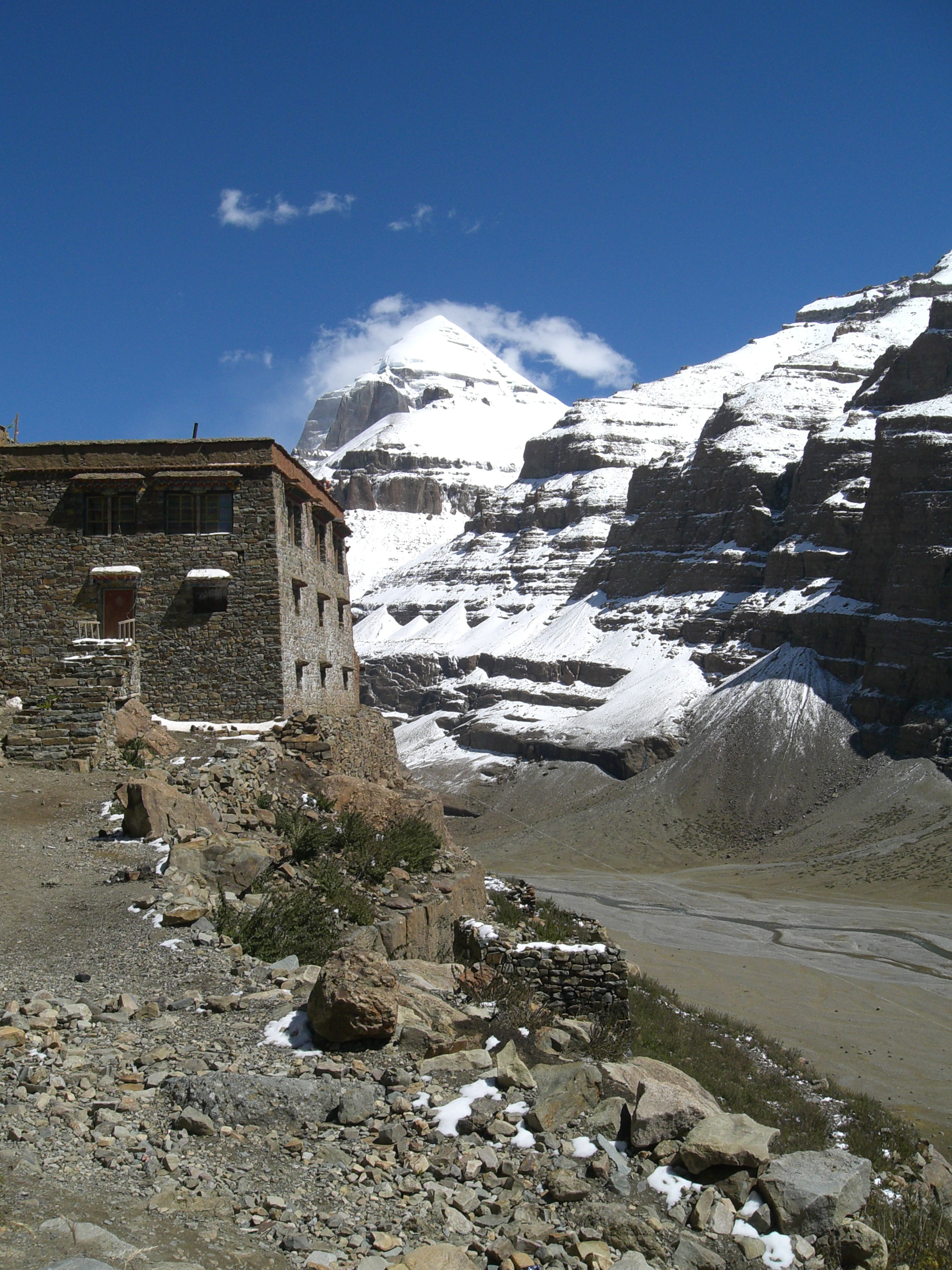
28 Jan TRAVELING TO TIBET: AN INSIDER’S GUIDE

The sacred mountain, Kailash
More than 30 years ago, I saw the Dalai Lama on German TV, laughing and joking as he likes to do. And I was appalled. I wondered self-righteously how the exiled leader of a country in utter despair could be jolly and lighthearted while his people are suffering.
Well, the reporter’s next question totally changed the Dalai Lama’s demeanor. He asked about the situation inside Tibet and this simple monk – as he likes to refer to himself – instantly became very serious and totally present with the question, compassion for his people spilling out of every pore. Even on a small black-and-white TV screen, the sincerity and genuineness of the man were palpable. I was more than intrigued. I was hooked.
Tibet stayed on my mind even as I moved to Telluride. In 1993, when Mountainfilm dedicated the festival symposium to the Himalayan “Land of Snows,” my resolve to learn more and to travel there solidified.Yet, it took another 14 years of raising children, earning a living, doing all the mundane stuff we do before I finally got the chance to enter what became the land of my dreams.
I have gone back to Tibet every year since, started the Tibet Fund at the Telluride Institute, and became a student of Tibetan Buddhism.
This coming summer I will travel to Tibet again, twice even, and I am inviting you to come along.
Here’s the deal.
Trip #1 in early June is what I consider the “beginner’s trip,” since we move about in private cars, chauffeured by knowledgeable drivers/translators. We sleep in hotels, guest houses and “home-stays.” No camping or extended trekking are required. For two weeks, we explore the land of the wild Tibetan horsemen, the Khampas, at the Eastern Edge of the Tibetan plateau, now part of the Chinese province Szechuan.
En route, we get to enjoy a variety of fantastic scenery, an abundance of art and culture, interactions with the locals, some service work, and decent food.
Caveat emptor: Any trip to the Tibetan areas of China is a hard trip, physically and emotionally, because of the altitude, the stresses of Third World travel in general, strange food, and more. Please do not expect luxury.
On the other hand, Trip #1 represents a fabulous opportunity to experience Tibetan daily life and culture in a gentle way, at a fantastic price.
Trip #2, September 15 – October 12, ups the ante. It is a hard-core pilgrimage to Mount Kailash and Lhasa, with teacher John Bruna.

Monastery at Lake Manasarovar
The trip includes a breathtaking nine-day trek through one of the most remote areas of Western Nepal, the Limi Valley in the Humla region, which – for better and for worse – is still largely untouched by modern civilization. There is time to relax at Lake Manasarovar where Hindu pilgrims from India like to take a VERY cold bath while bowing to the Holy Mountain. (We might be content with visiting ancient monasteries.)
From there, we take a three-day side trip to explore the “Lost Kingdom of Guge,” a mysterious place of deserted ruins, temples, and artifacts. Fully acclimatized and strong by then, we are ready to start our three-day circumambulation of Mount Kailash, alongside Buddhists, Hindus, followers of Jain and Bon, who all consider the mountain sacred. The 36-mile pilgrims’ path takes us past chortens (stupas), a sky burial site, monasteries and prostration sites, and over the Dolma-La pass at 18,500 feet, always immersed in fantastic landscapes and the energy field of the mountain.
Totally blissed-out, we then start our long road trip to Lhasa, moving through pastoral valleys and over high passes, past nice settlements and dirty, impoverished ones, via the Panchen Lama’s monastery and temple at Shigatse, and my favorite town, Gyantse.

Along the path
Finally, two days in Lhasa should give us just enough time to see the major sights such as the Potala Palace, the Jokhang Temple, one of the big monasteries, and to join locals and other visitors in endless walks around the Barkhor before the trans-Himalayan flight back to Kathmandu.
John Bruna, who came to Telluride for the first time four years ago as monk Jangchub Chophel, accompanies us and gives a daily, Buddhist- inspired teaching, fitting the place and our collective needs.
I promise a journey of a lifetime. Whichever journey you choose.
For more information on these trips, please call me, Elisabeth Gick, at 970 708 7750, or e-mail me egick1@gmail.com.


Sorry, the comment form is closed at this time.